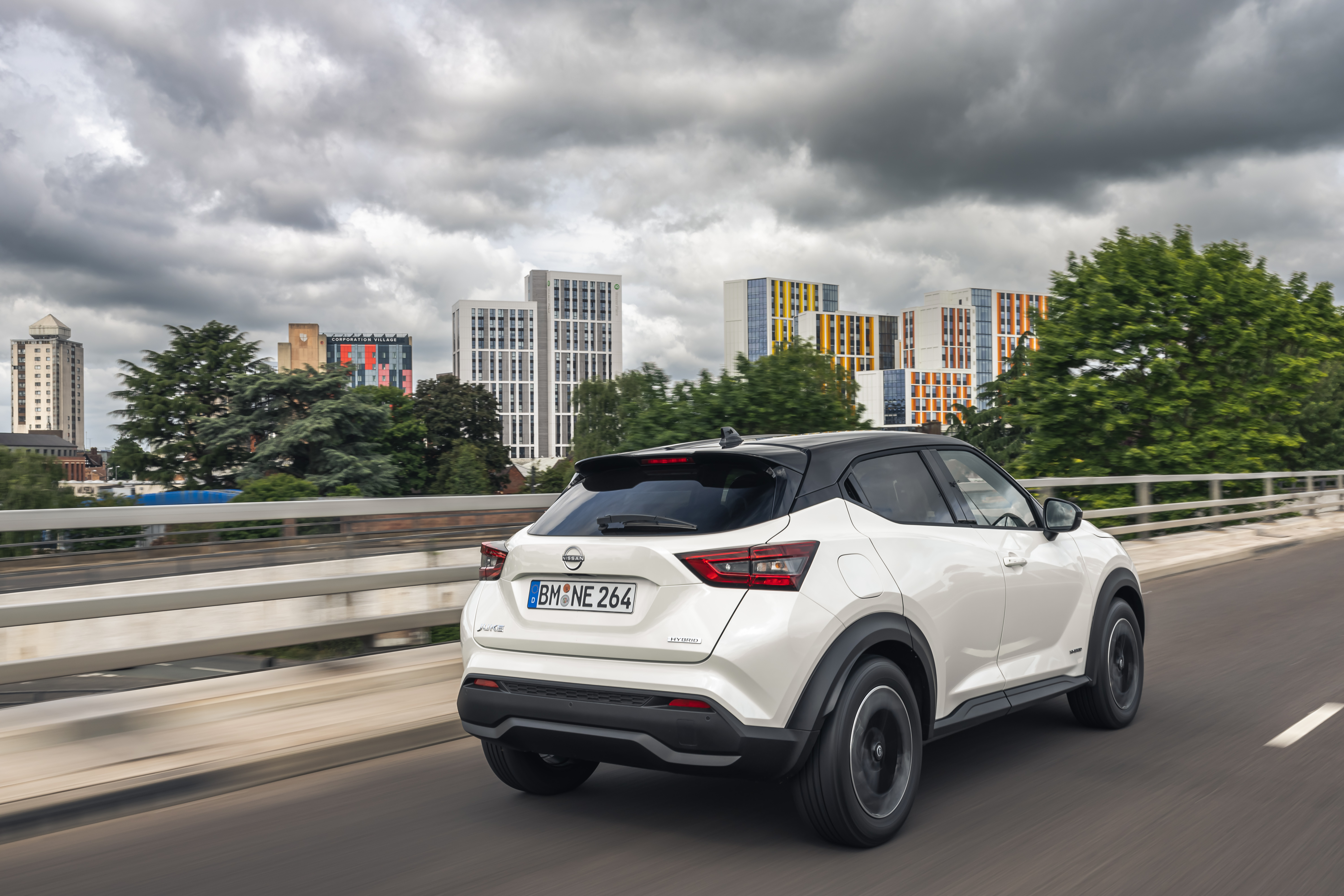First Drive: Nissan’s Juke Hybrid brings added efficiency to the range
The Juke has gained a new hybrid powertrain, but how has it changed the way this crossover drives? Jack Evans finds out.

What is it?

Electrification is one of the hot topics in motoring at the moment, with battery assistance being one of the key ways that manufacturers are improving emissions, bettering fuel economy and delivering a more EV-centric driving style. Now Nissan is in the process of including some form of electrification in a variety of its new cars, including the pint-sized Juke.Until now, that is. Today, we’re looking at the new Juke Hybrid, which takes the conventional – and very popular – Juke recipe but adds a little bit of electrification into the mix for good measure.
What’s new?

Apart from what’s going on underneath, you’d be hard-pressed to distinguish the hybrid Juke from the regular petrol-powered version. There are a couple of features to speak of, such as a redesigned grille pattern, but this is otherwise straightforward Juke.Inside, it’s much the same again. Juke Hybrid models do benefit from coming in at a higher grade than the regular car from the off, so equipment levels on even ‘base’ grade cars are very good.
What’s under the bonnet?

So it’s underneath the Juke where the bulk of the changes have occurred. This is a regular hybrid, of course, so there’s no option to plug it in, but it still offers decent gains in terms of economy over the regular car. It’s all based around a 1.6-litre petrol engine, which is then combined with an electric motor and battery. You get 141bhp in total – a decent slug more than the 112bhp you get in the regular petrol Juke – which contributes to a 0-60mph time of 9.9 seconds.Nissan claims you could see up to 56.6mpg – over the regular car’s 47.1 – while CO2 emissions sit at between 114 and 115g/km depending on wheel size – a significant improvement on the regular Juke’s claimed emissions of between 137 and 140g/km.
What’s it like to drive?

The Juke has been engineered to give a driving experience as close to that in a fully electric car as possible, which is why it starts up silently and will travel at speeds of up to 34mph in electric-only mode. It makes it really relaxing to drive, particularly around town, and helps to give nippy, eager performance as and when you want it.The new automatic gearbox – sourced from Alliance partner Renault – is a big improvement, too, and shifts smoothly and without question. We tried cars riding on both 17- and 19-inch wheels and surprisingly found the ride not to be too dramatically altered on the latter. However, if you are after the best possible ride quality then stick to the smaller wheel. The hybrid system does manage the switch between petrol and electric power seamlessly, too.
How does it look?

The Juke is quite a striking-looking compact car, so you can understand why Nissan hasn’t messed with the formula too much with the hybrid. Plus, a number of drivers would prefer that their car doesn’t scream about their battery-assisted credentials, so we can’t fault the Juke Hybrid’s more undercover design.You get Hybrid badges on the front doors and tailgate, while that newly designed grille actually has a smaller opening in order to maximise aerodynamic efficiency. It’s also got an integrated shutter, which can be adjusted depending on how much cooling the engine needs. This helps to take that efficiency even further.
What’s it like inside?

The interior of the Juke feels nicely finished, with the cabin of our test car sporting some good-looking Alcantara-style material on the dashboard. It helped to lift the overall feel of the interior while also giving a slightly sporty feel. The general fit and finish is good, too, and though there are some cheaper plastics to speak of lower down, everything is nicely fitted together.The hybrid system, as it does in so many other cars, does impact boot space on the Juke. So while in the regular car you get 422 litres, this shrinks to 354 litres in the Hybrid. This also diminishes seats-down space, falling from 1,305 litres in the standard car to 1,237 in this hybrid. It’s still a well-shaped area, but for families, this could prove quite the hindrance.
What’s the spec like?

Juke Hybrid models do get a generous amount of standard equipment from the off, but then they do command a £1,730 over an equivalent automatic gearbox petrol Juke. All versions get 17-inch wheels included alongside a full infotainment system, keyless entry and automatic climate control.In terms of how the tech works, things aren’t too bad. The main infotainment screen already feels a bit dated in terms of its appearance and graphics, however, but the inclusion of Apple CarPlay means that you can bypass this should you want to. The heating and ventilation controls are logically placed and easy to use, too, while the small screen ahead of the driver is useful for monitoring how battery energy is being used to power the car.
Verdict
Given that the Juke Hybrid costs a decent slug more than the regular car, it could be easy to discount it. However, on finance payments, the difference between the two is only around £12 per month and, when you take into account the savings on fuel you’ll make, it becomes clear that the Hybrid is the one to opt for.
Not only will it most likely work out cheaper when financed, but it’s also better to drive and has a far more accomplished gearbox than its regular petrol stablemate. For us, it’s the pick of the Juke range.





